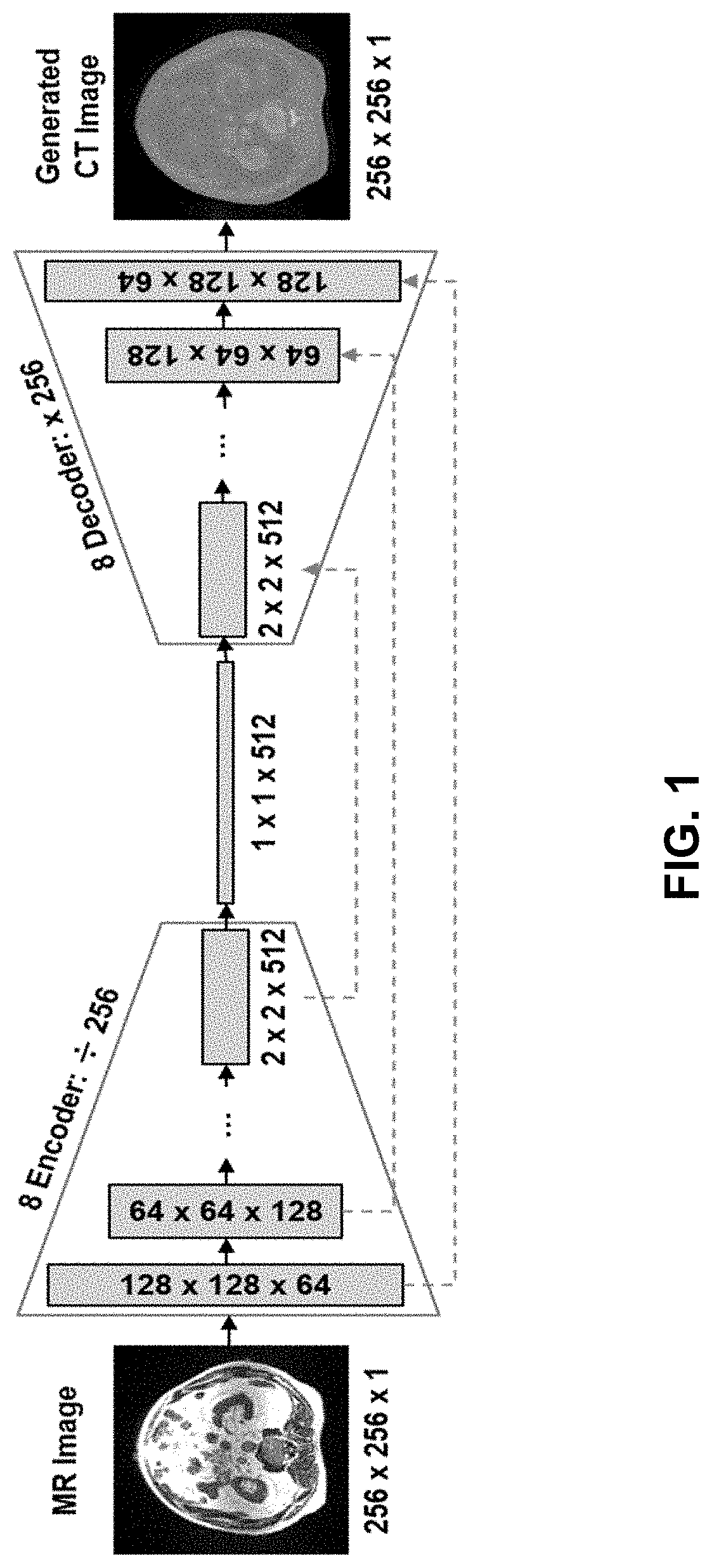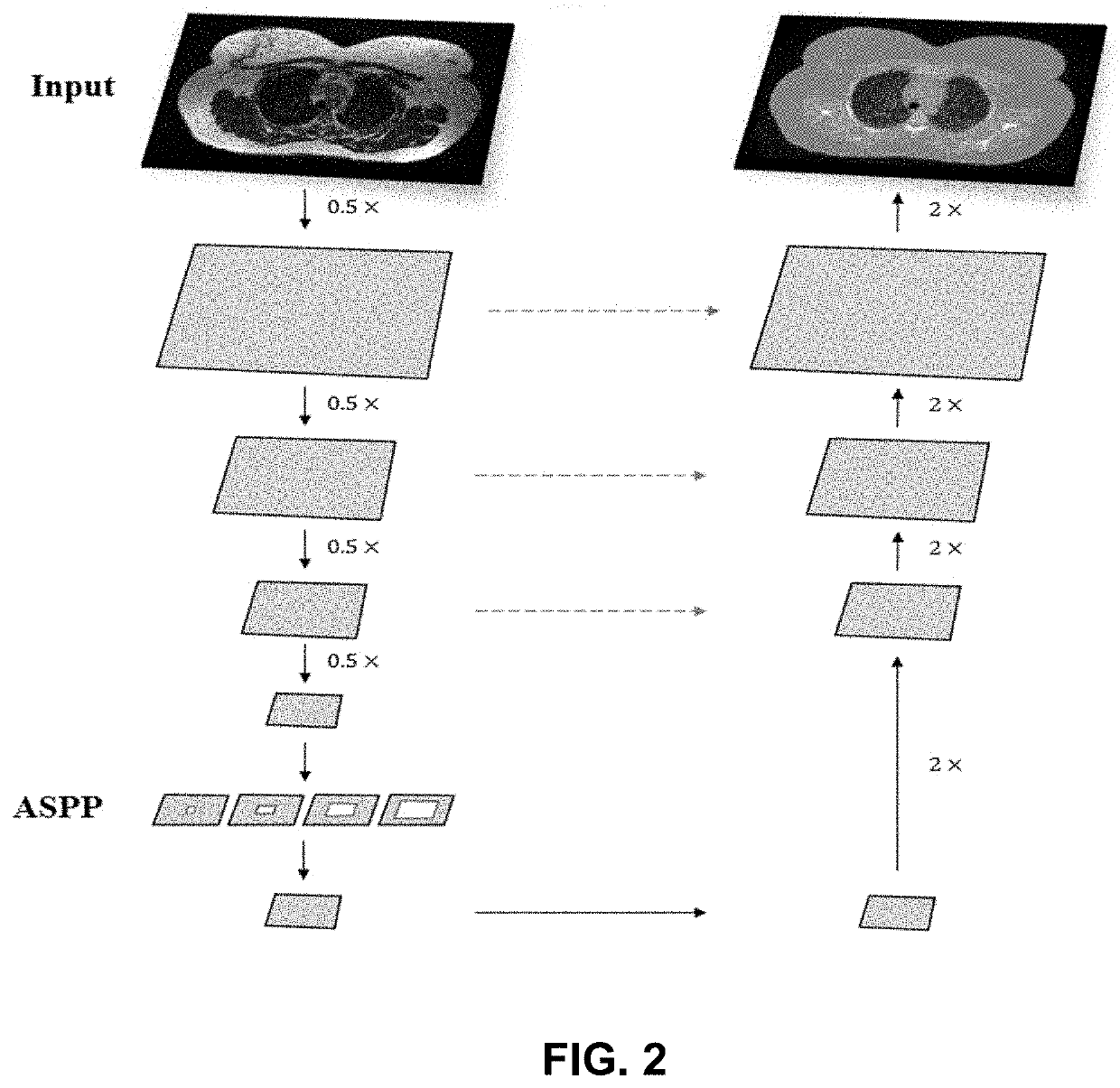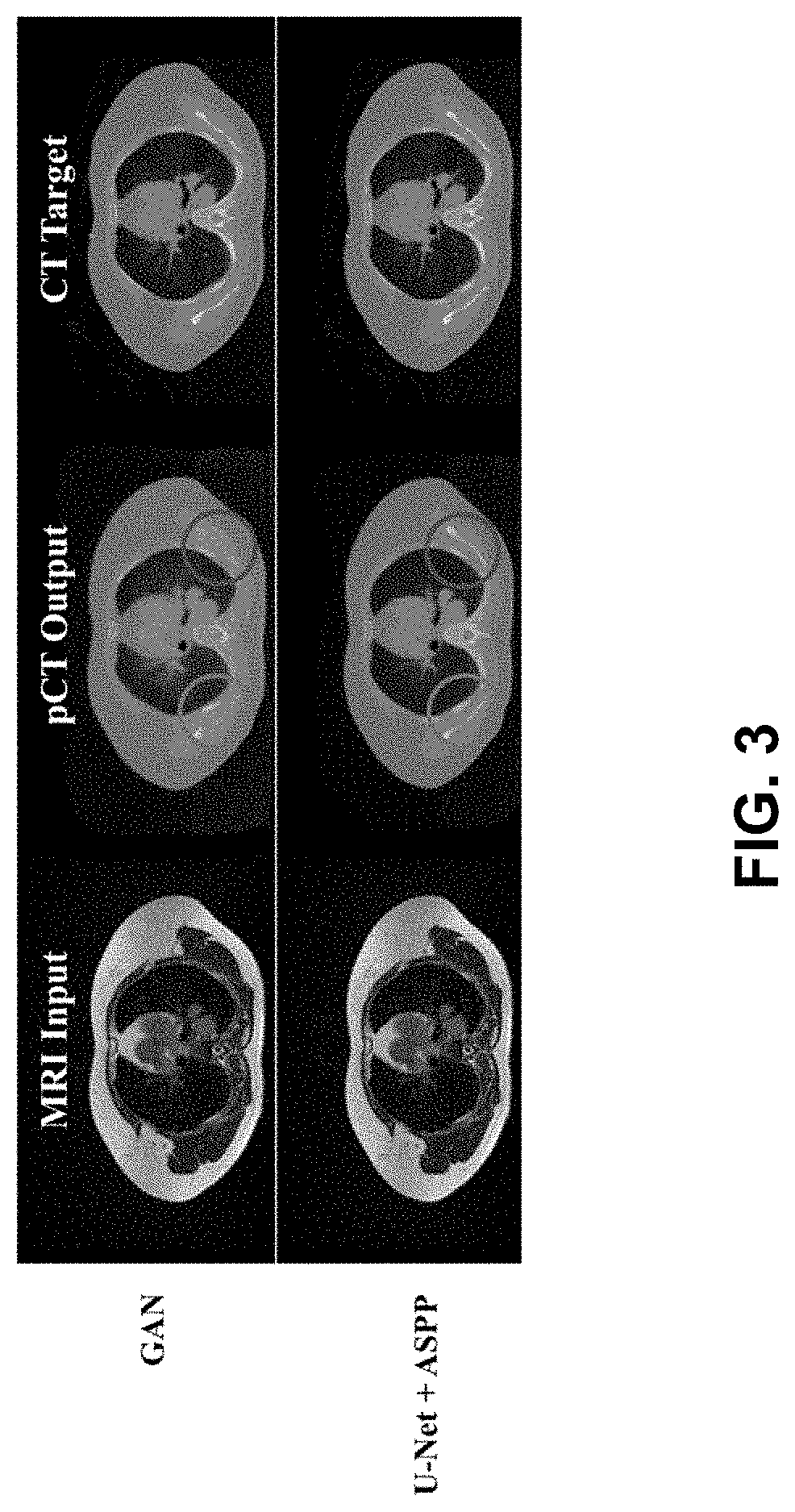Ml-based methods for pseudo-ct and hr mr image estimation
a pseudo-ct and image estimation technology, applied in image enhancement, instruments, therapy, etc., can solve the problems of inability to obtain high-resolution scans, limited spatial resolution, and inability to achieve high-resolution scans, so as to reduce spatial dimensions and increase depth.
- Summary
- Abstract
- Description
- Claims
- Application Information
AI Technical Summary
Benefits of technology
Problems solved by technology
Method used
Image
Examples
example 1
ning-Based Non-Iterative Low-Dose CBCT Reconstruction for Image Guided Radiation Therapy
[0193]In image guided radiation therapy (IGRT) settings, cone-beam computed tomography (CBCT) system using kilo-voltage (kV) x-ray source is the most widely-used imaging devices.
[0194]CBCT uses ionizing x-ray for imaging therefore, there is a legitimate concern about hazardous radiation exposure to the patient.
[0195]Hence minimizing the imaging dose is desirable based on ALARA principle.
[0196]The most common way in low-dose CBCT application is the ‘model-based image reconstruction technique’ which is computationally heavy and time consuming due to its iterative nature.
[0197]In this study, we disclose a deep learning-based low-dose CBCT reconstruction technique that utilizes standard analytical reconstruction technique (i.e. FDK).
[0198]Instead of constructing the model within the reconstruction domain, we formulated this problem as restoring high quality high-dose projection (100 kVp, 1.6 mAs) fro...
example 2
n of De-Noising Auto-Encoder (DAE) for MRI SR Network
[0219]To validate the accuracy of the DAE described above, the following experiments were conducted.
[0220]A DAE network similar to the DAE network illustrated in FIG. 31 was trained using 480 LR breath-hold images. All data used in this study were acquired from a commercially available MR-IGRT system (ViewRay Inc., Oakwood Village, Ohio) that integrated a split-bore 0.35 T whole body MRI system with a three head Co-60 radiation therapy delivery system. MRIs of the patients and volunteers were acquired using torso phased array receiver coils. Both breath-hold 3D and free breathing 3D cine (or 4D) volumetric images in three orientations (transverse, sagittal, and coronal) were acquired using the 3D true fast imaging with steady-state precession (TrueFISP) sequence. The generalized auto calibrating partially parallel acquisition (GRAPPA) technique was used to accelerate image acquisition.
[0221]An NLM filter was utilized to obtain the...
example 3
n of Down-Sampling Network for MRI SR Network
[0225]To demonstrate and validate the robustness of the DSN, the following experiments were conducted.
[0226]Training data for the DSN were collected from serial LR and HR scans of a phantom and volunteers acquired in a single breath-hold, resulting in 480 data pairs. Since the performance of the SRG model is highly dependent on the robustness of the DSN, the data pairs to be used were manually selected by rejecting or repetitively scanning the volunteers until the HR and LR scans were perfectly paired. The HR training data sets were cropped to a size of 192×192 pixels (1.5 mm×1.5 mm per pixel) with the corresponding output LR size of 48×48 pixels (6.0 mm×6.0 mm). Uncropped HR MRIs of 256×256 pixels (1.5×1.5 mm) and the corresponding LR images of 64×64 pixels (6.0×6.0 mm) were used in the testing and inferencing steps.
[0227]The optimization of parameters during training was performed using the gradient descent method as described above wit...
PUM
 Login to View More
Login to View More Abstract
Description
Claims
Application Information
 Login to View More
Login to View More - R&D
- Intellectual Property
- Life Sciences
- Materials
- Tech Scout
- Unparalleled Data Quality
- Higher Quality Content
- 60% Fewer Hallucinations
Browse by: Latest US Patents, China's latest patents, Technical Efficacy Thesaurus, Application Domain, Technology Topic, Popular Technical Reports.
© 2025 PatSnap. All rights reserved.Legal|Privacy policy|Modern Slavery Act Transparency Statement|Sitemap|About US| Contact US: help@patsnap.com



